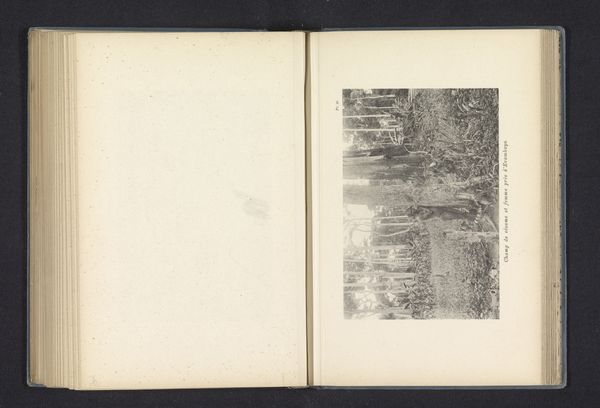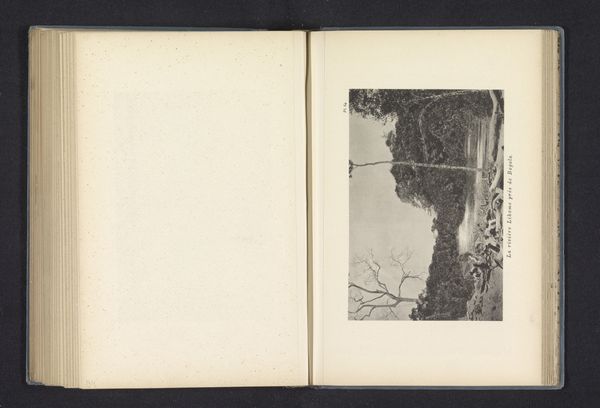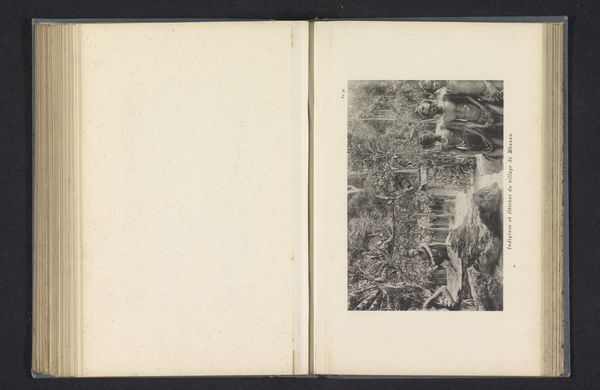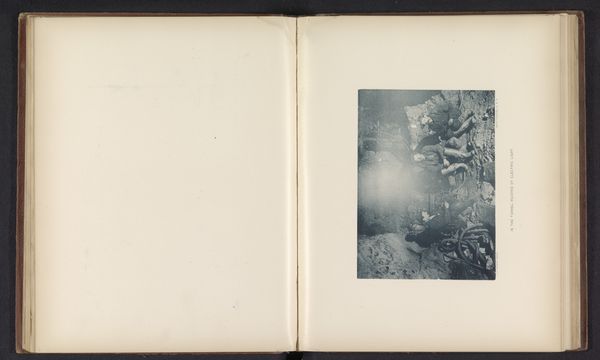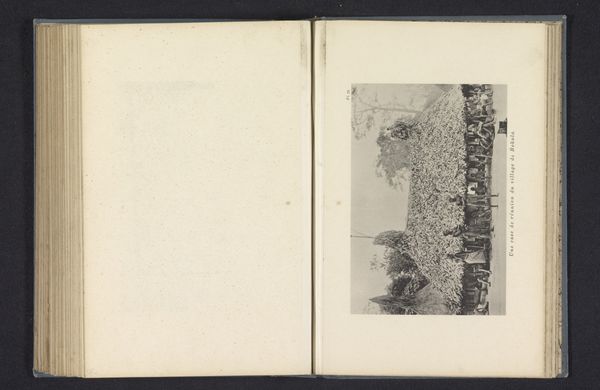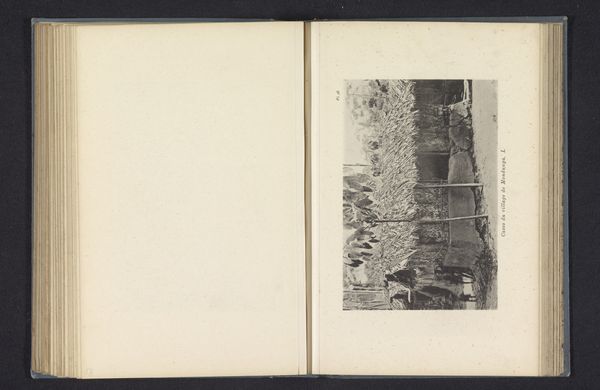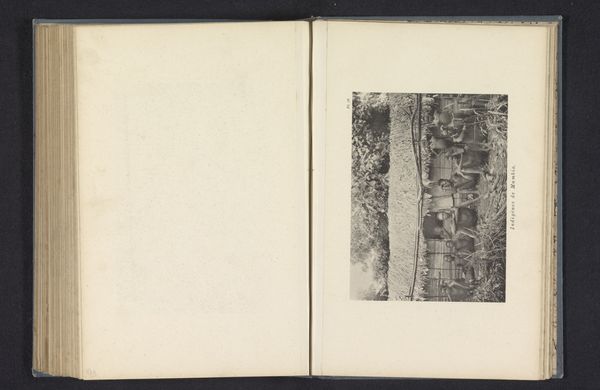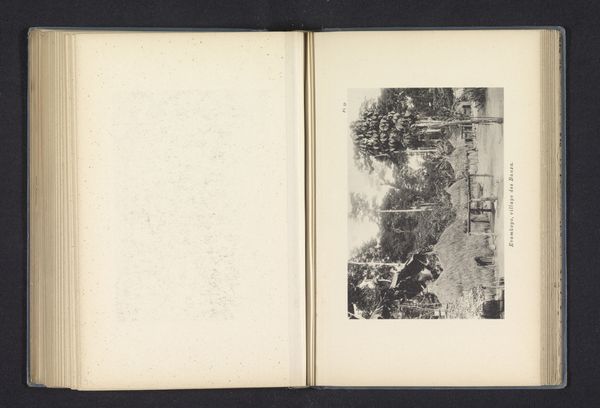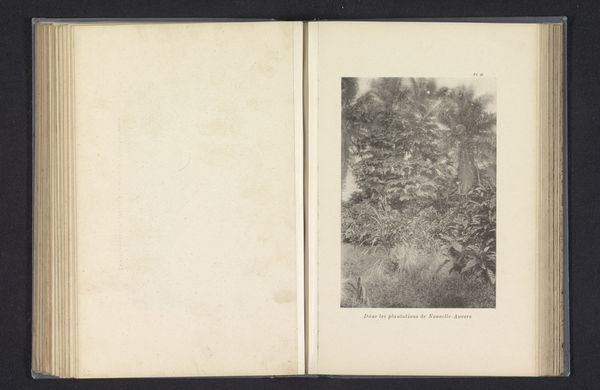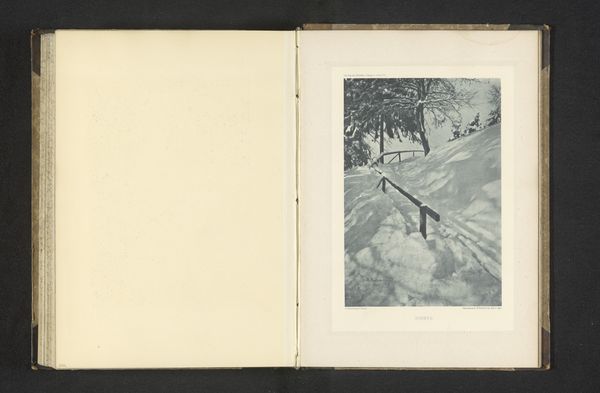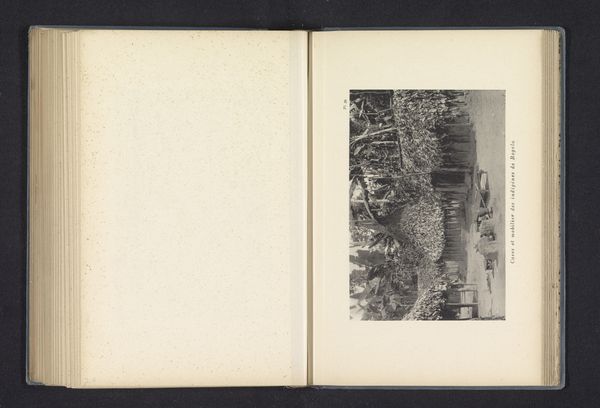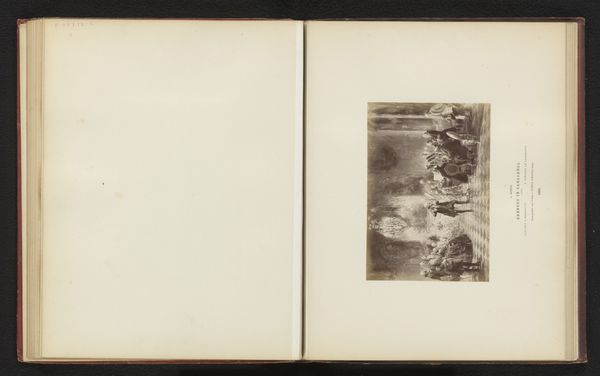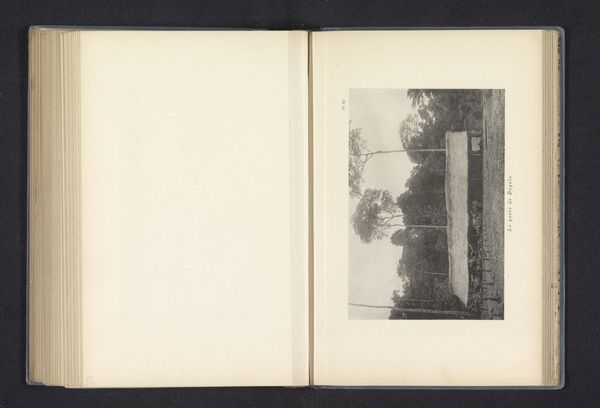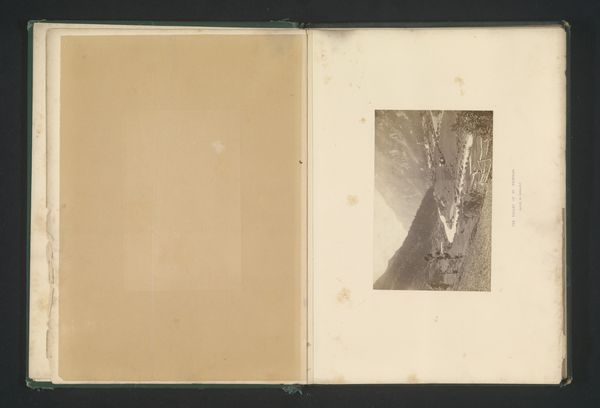
photography
#
african-art
#
landscape
#
photography
#
building
Dimensions: height 108 mm, width 163 mm
Copyright: Rijks Museum: Open Domain
Editor: Here we have "Woningen te Bogolo," a photograph by Franz Thonner from 1896. It looks like a village scene in Africa, but the black and white tones give it an abstract feel. I am especially drawn to the composition; it seems quite dense with natural elements that create varying contrast. What do you see in this piece? Curator: Formally, the image strikes me with its sophisticated interplay of light and shadow. Observe how the light doesn't uniformly illuminate the scene. Instead, it is carefully deployed to create depth and accentuate the textures. Can you identify any recurring structural patterns or shapes? Editor: I can see that the light filtering through the trees creates linear patterns. Is it trying to depict the structures of civilization in the natural world? Curator: The recurring diagonals of light work effectively to unify what might otherwise feel like a chaotic composition. This controlled application serves a deeper aesthetic purpose beyond mere representation. The texture of the trees is palpable; this contributes significantly to the viewer's engagement, does it not? It begs for deeper questions about the relationship between perception and image. Editor: That’s interesting, I hadn’t thought about it in terms of light and shadow as creating more abstract formal shapes rather than just showing buildings in Africa. Curator: Exactly. The play of light here transforms a literal depiction into a sophisticated formal exercise. Do you find the composition balanced or unbalanced? Where does your eye travel, and what elements guide it? Editor: My eye definitely bounces around due to the variation of forms created by light. The placement of objects creates depth and asymmetry, which does feel really engaging now that you point it out! I realize there are lots of directions I can continue my artistic understanding. Curator: Indeed. Formal analysis, in this case, allows us to decode Thonner's artistic intention beyond the surface level depiction. I am always eager to contemplate art for this perspective.
Comments
No comments
Be the first to comment and join the conversation on the ultimate creative platform.
